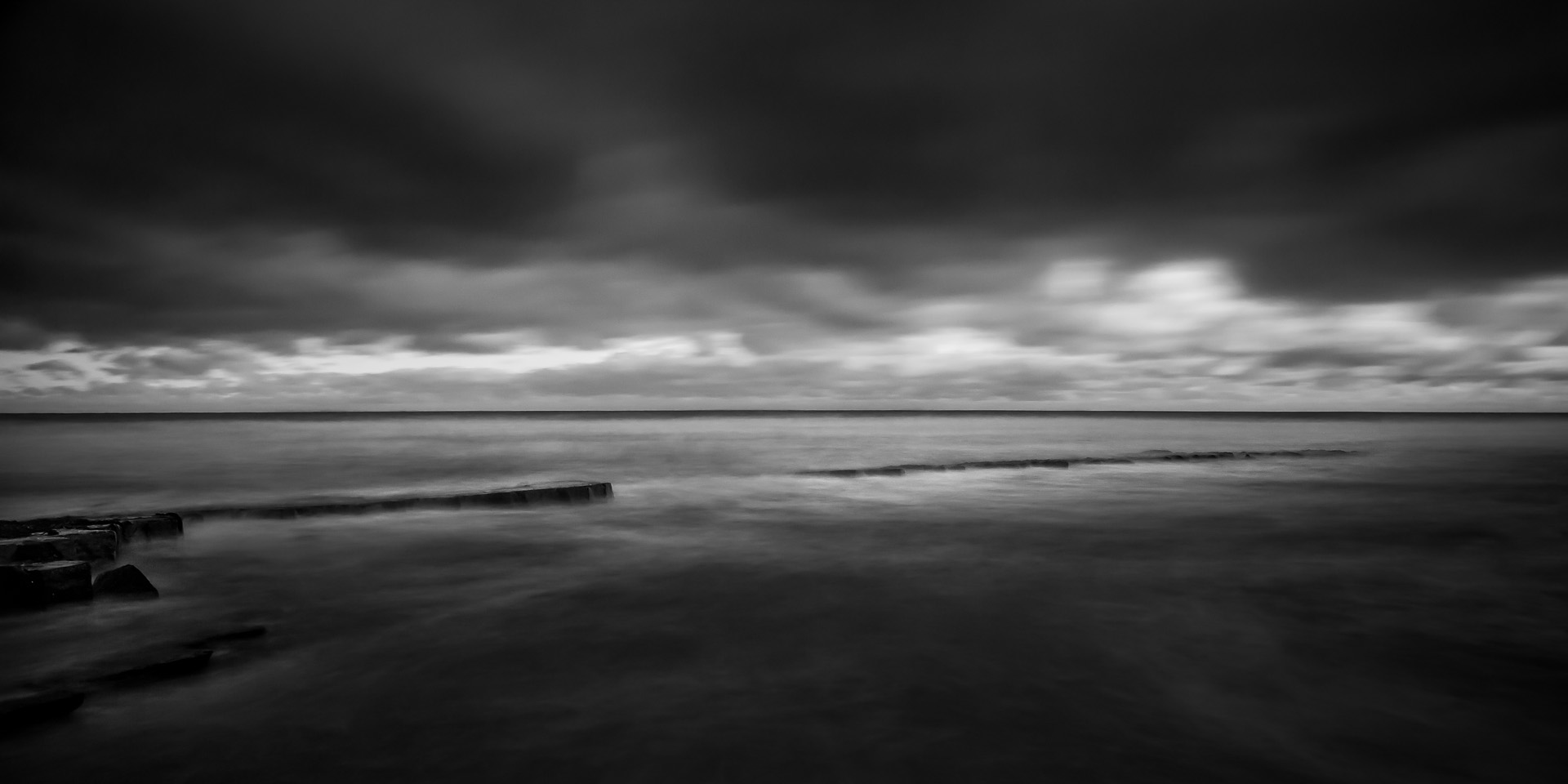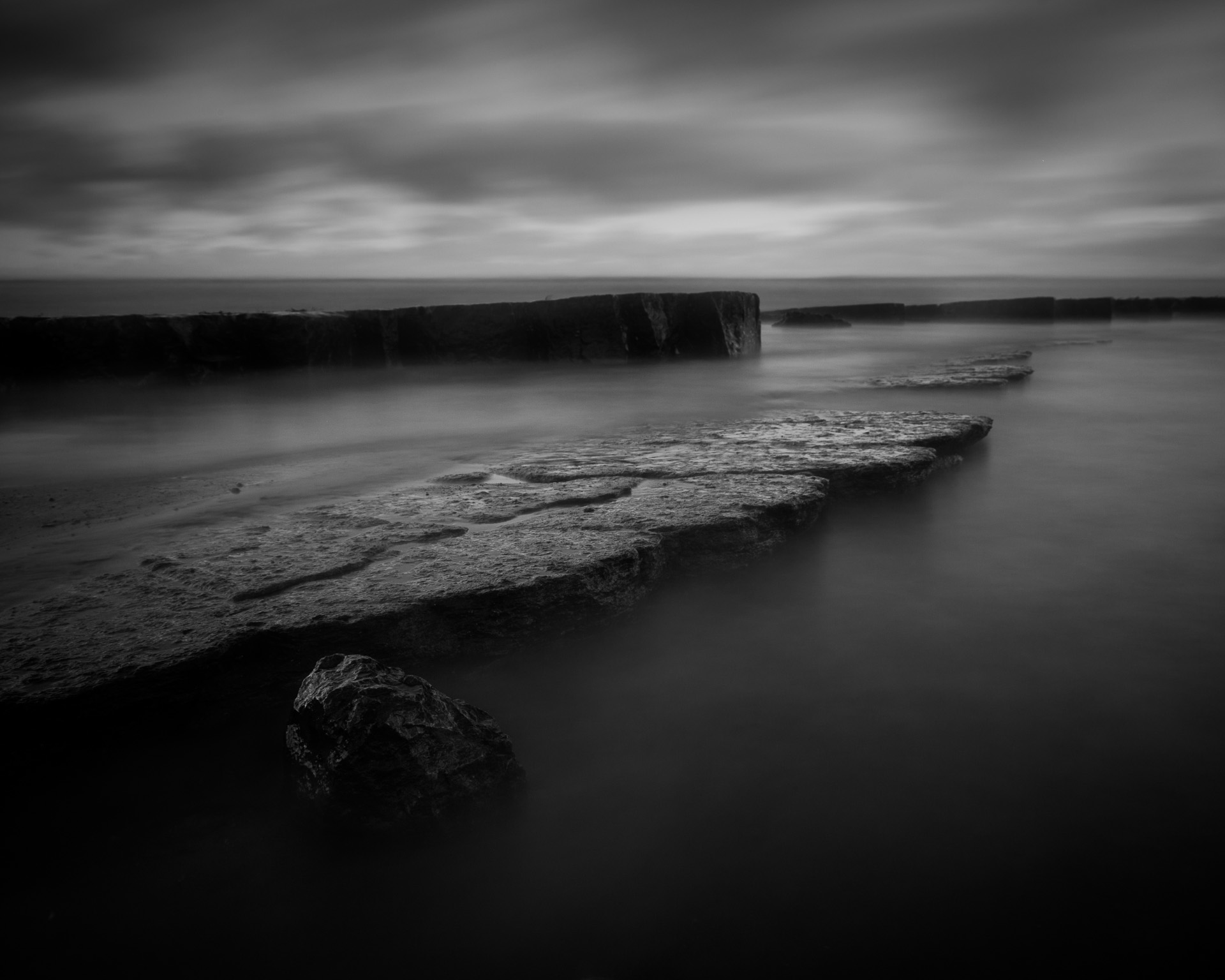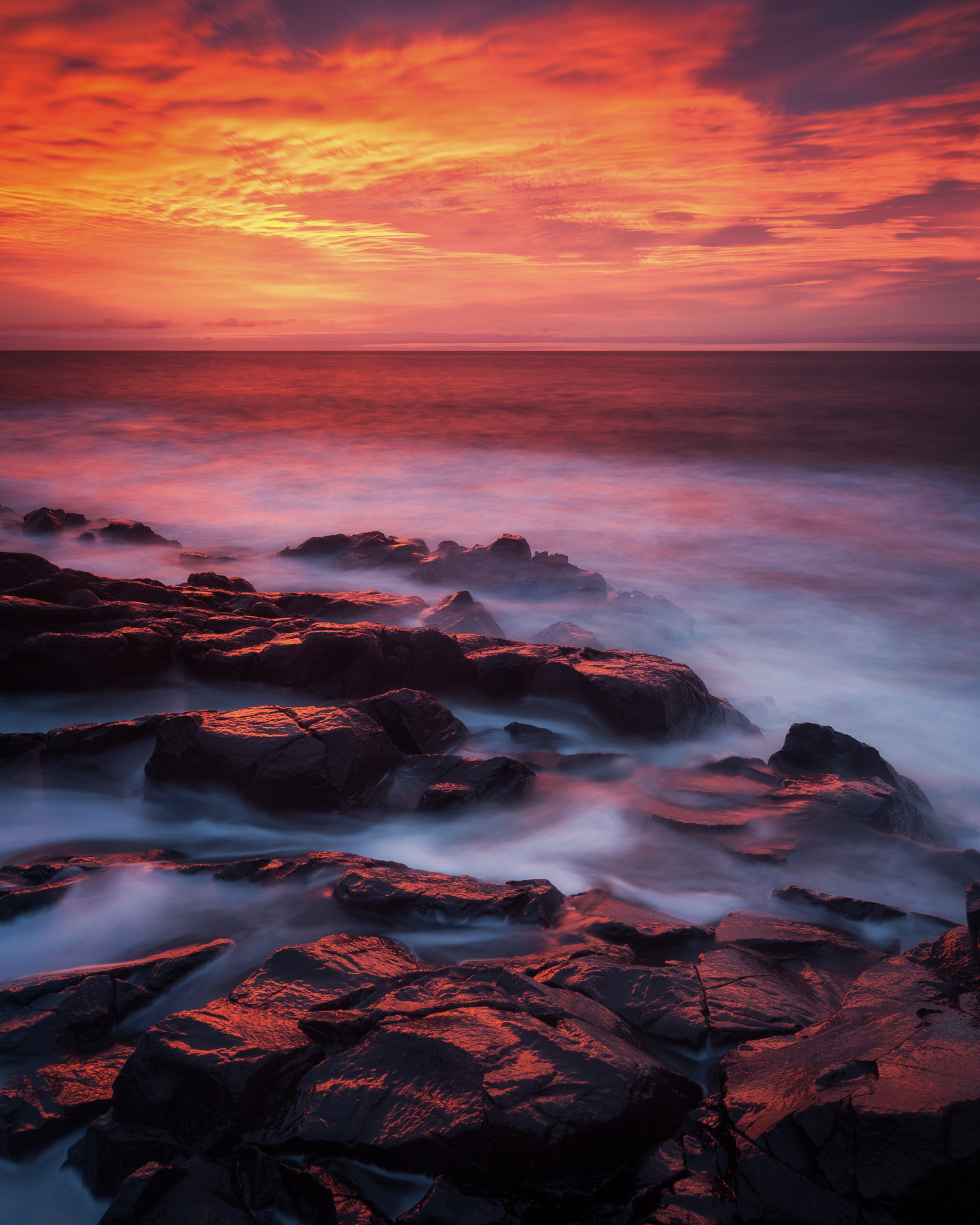Although I grew up close to the Northumberland coast, as is often the case it wasn't until I started photography that I realised how fascinating it is.
My parents live in Coldstream which is just inside Scotland. So it was the beaches of Northumberland that we'd go to on day trips with a picnic (when it wasn't raining and blowing a gale). Yet I never really fully appreciated the beauty of the area until I started exploring it with my camera last year. Photography truly is a gift far greater than images alone.
The beach we often used to visit as kids was Cocklawburn beach near Scremerston which is just south of Berwick-Upon-Tweed along the A1. Not only is it a beautiful beach but like most of this stretch of coast it has some remarkable geology to marvel at. Rocks resembling pavements, dinosaurs' skeletons, waves, furrows, landscapes in miniature. So much to explore. I still get to visit this area when I visit my parents' for the weekend, which normally means I can take in 1 or 2 sunrises.
But I wanted to spend a bit more time exploring it more fully, further south than I was accustomed. I checked the tide tables and they looked promising for last weekend - close to high for a couple of shots I had in mind, and I generally have better success with a higher tide. So I asked my wife about the possibility of a photography weekend away. "Ooh, that's close to our anniversary, maybe we could combine the two?". Not quite the freedom I was looking for! Still it was a reason to stay in a hotel further south at Bamburgh (saving me a 40 minute drive from my parents).
With a bit of umming and ahhing and some advice from my twitter mate David Breen (@breenster) my locations were: Cocklawburn for Saturday sunrise (I was staying at my parents' on Friday night), Rumbling Kern near Howick for Saturday sunset and Cullernose Point again near Howick for Sunday sunrise.
[osmap width=600 height=600 markers="NU032483;Cocklawburn Beach|NU262172;Rumbling Kern|NU261187;Cullernose Point"]
My chief aims and really the reason for sharing in this blog post was to do something a bit different. In my "Be Brave" post I've talked about turning my back on more obvious opportunities in favour of finding something more unique and hopefully original. A more typical shotlist for a weekend in Northumberland would perhaps involve some combination of Bamburgh Castle, Dunstanburgh Castle, St. Mary's Lighthouse and Lindisfarne. But I wanted to explore and find something different with a particular focus on the geology.
Looking for something different is something I'm looking to develop in my work this year. This has already manifested itself in the images I made during the recent snowy spell, shunning more typical Peak District locations to make images within a few miles of my house. Increasingly I feel that everything has had a photograph taken of it, in so many different ways, and that as unique and highly creative as (I would like to think!) I am, I can only make a tiny contribution beyond what's already been done. Yet as much as "everything's" been shot there's so much of this country and the world that remains relatively unexplored through a lens.
To continue on this point a little further, my particular particular valley in the Peak District, the Longdendale, has very few images of it beyond walkers' snapshots on Flickr. By contrast Mam Tor, Stanage Edge, Curbar edge and the others probably have a server dedicated to hosting those images alone! That was the reason for me starting my Longdendale project (which I shall update shortly), to find and share something that it seems many haven't seen. Doing a bit more exploring and finding the non-obvious is something I'd like to apply to my image making more widely.
Of course, going it alone like this meant it was going to be tough. There's relatively little imagery that you can use to build a picture of an area, and you're somewhat trusting to luck that you'll find something. Of course, there's always something to find! But I think that's something that you have to build a trust and confidence in. In suggesting locations David had also suggested they were "tough to find compositions". I sort of knew I'd have my work cut out for me. And yet, that's the sort of challenge I feel I should thrive on.
What this more exploratory approach means, of course, is that my image making becomes a bit more hit and miss. There's every possibility I could spend a day, a week, or even months making images that don't really do much for me. In the same time period, I could rely on tried and trusted locations - and even compositions - to create an expanding body of work. There's a part of me that feels the need to do that - you're only as good as you're last shot and all that - but at the same time, I feel I need to do something more and embrace the challenge. Again I need to trust my instincts and yes trust to luck. That gem that you mine yourself is far more precious than that which is handed to you.
On this particular trip David was right - finding compositions and pleasing images was tough! I returned with only a handful of images I'm sorta kinda happy with, and definitely none that I'd consider portfolio worthy. That probably shouldn't come as much of a surprise. Ansel Adams talks about making 12 good images a year, so I am probably being greedy expecting a set of decent images in any given particular weekend, even ignoring my unfamiliarity with the location! Yet I remain somewhat disappointed.
I think I'm disappointed for two reasons. The first is that the images weren't that great. That's an obvious source of disappointment.
But the second is deeper. There's probably only one image here where I felt it was in keeping with my aim, finding and trying something bolder and a bit different (even then I had hoped for a better result, but at least I learned something). I feel like I've gone to difficult places to photograph, and then tried to photograph them in the same way that they and other places have been photographed. I don't think I fully embraced the creative potential. A lot of the shots, unsurprisingly, are long exposures, and in most cases the geology is a supporting feature rather than a primary focus. So the second source of disappointment isn't with the images, but with myself.
I think part of this was due to expectations I had placed on myself to come back with some different, interesting and wowing images to prove to myself and others that this is the right approach. When there's pressure you tend to rely on tried and trusted processes, and your mental dictionary of shots that you know work in particular situations. As I've said before, expectation can be a killer. I went looking for something different and came back with a mediocre version of the usual. Although I don't dislike these images, they sort of feel like someone else's images instead of the ones I wanted to make. Instead of letting myself go, explore fully and see what happens, I created preconceptions and misconceptions of what I should shoot.
Still, it's all good! It's part of the learning process, and I'm glad that I've recognised where I think I've gone wrong here. I'll take some time out to reflect on the results and what I might have done differently, and perhaps more importantly why. Food for thought.
In the meantime I thought I'd leave you with the handful of shots I was most happy with. Photography can be full of myth and magic at times. We forget about all the times that things don't work out, or why they don't, and we don't recognise that others go through the same. The shots below serve as a reminder to me at least that things don't always work out - at leas the way you intend - and that's a very necessary part of our progress.






